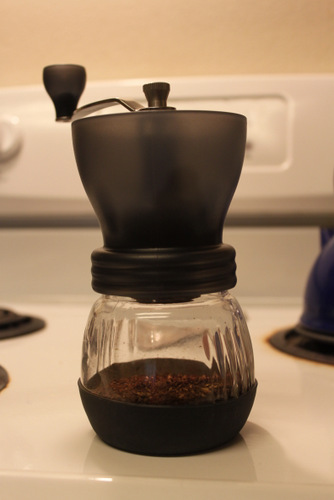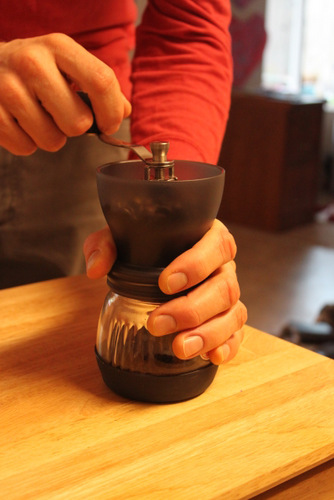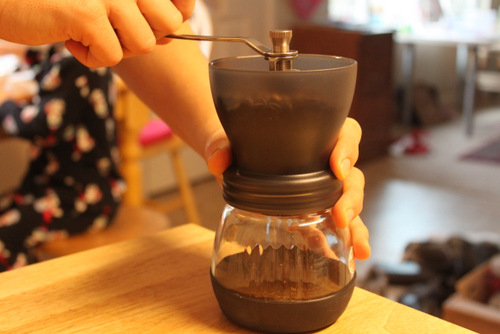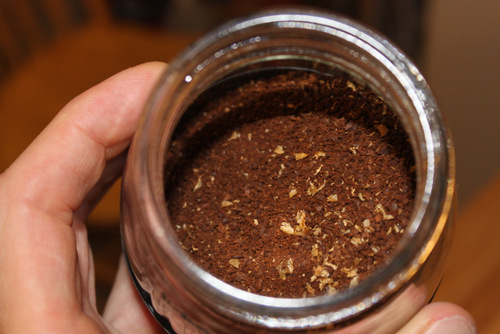Our French press broke the other day, so I went out and bought a grinder. Yeah, it doesn’t make much sense, but I’ve been meaning to buy a better grinder for a long time. Several coffee people told me having a good grinder grinder is the most important factor in making better, more consistent coffee at home. The replacement grinder I chose was a Hario Skerton, a hand-cranked, ceramic burr grinder. I want to share what I have learned from using it.

For many years, we used an old electric blade grinder, one of those nut/spice/whatever-the-hell-you-want grinders that still worked, even though it was about thirty years old. The more I learned about coffee, though, the more I understood the weaknesses of blade grinders. They produce a very inconsistent grind, where the particle size of the coffee varies from super small (fines, in industry jargon) to nearly half-bean chunks (boulders). The inconsistent particle size means that—if brewed for the same length of time—some will be over-extracted, adding bitterness to the coffee, some will be just right, and some will be under-extracted, adding sourness. Additionally, the friction of the blade creates a lot of heat, which degrades the flavor compounds inside the beans, long before they are dissolved into water.
Burr grinders provide a more consistent particle size than blade grinders, and the ceramic burrs should maintain their sharpness for a long time. They create much less heat too. According to the person selling me the grinder, the Skerton is adequate for French press, pourovers (e.g., Chemex), and drip coffee makers.

At $50, the Skerton was relatively affordable. I really wanted to get was the Baratza Encore, or more likely, it’s more expensive cousin, the Virtuoso. However, I wasn’t ready to spend $129 or $229 on my coffee grinder. Not yet, at least.
The Skerton has many things going for it. It is much more compact than the electric models, so it fits into our kitchen’s limited space better than another countertop appliance would. Using the hand grinder is very satisfying too. It makes you feel more intimately involved with the brewing process. As the beans are pulverized by the rotating burrs, they give off a satisfying crunch that resonates in your ears and through your hands. The aromas that pour out of the freshly-ground beans are intoxicatingly sweet.
However, the Skerton has some significant limitations. The grinder is pretty slow, for example. If you need to make coffee for more than one or two people, your grinding time might end up being longer than your brew time.

Also, if you have small hands, this grinder is difficult to operate. The beans create a fair amount of resistance as they work their way through the burrs. Keeping the grinder level and stable can be difficult, because it requires the user to firmly grip the jar beneath. For people with larger hands (including your author), this is not too much of a problem, but people with smaller hands may struggle to keep it steady. A rubber grommet on the bottom of the receptacle does help in this regard. Just be sure to operate the grinder on a firm countertop.

The Hario hand-cranked coffee grinder is a step up from the blade grinder. I like its price, the physicality of using it, the more consistent grind and the compact size, but for grinding large amounts of coffee or for people with small hands, there are other options (e.g., the aforementioned Baratza grinders) that would work better.